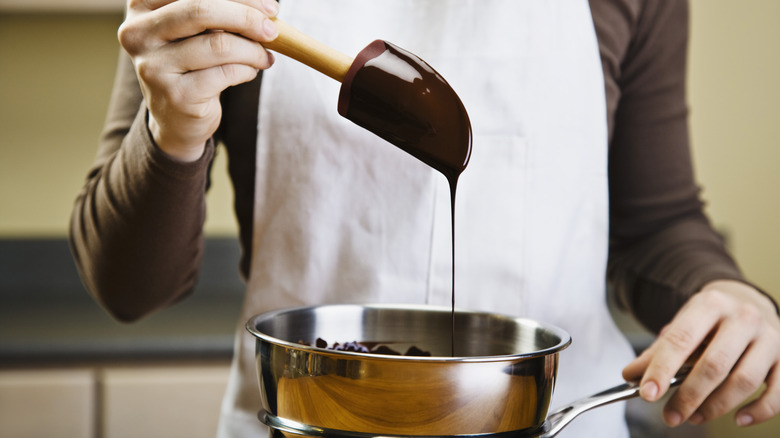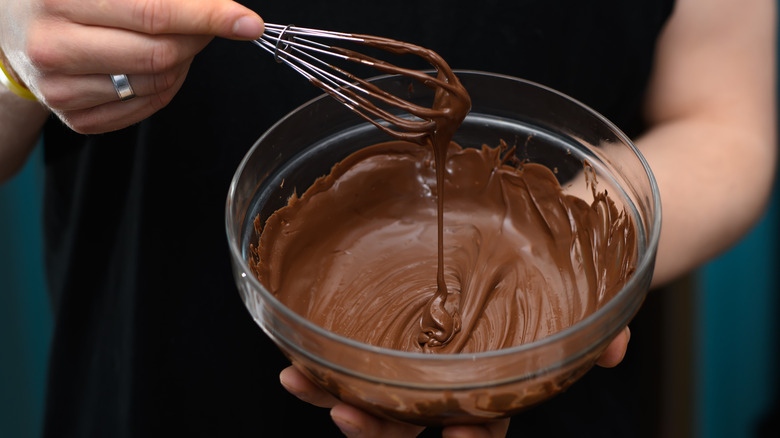Overheat Your Chocolate? Don't Panic, There's A Way To Save It
We may receive a commission on purchases made from links.
There are plenty of reasons why you might find yourself melting chocolate. Whether you're making a traditional ganache as an ingredient to upgrade your classic chocolate cake, or you're planning on topping your sundae with a chocolate fudge sauce (just like Blake Lively's easy recipe). But chocolate can be a delicate and fickle thing, and it's easier than you'd think to take things too far and overheat it. Even so, overheating chocolate won't necessarily cause it to seize up –- that's actually caused by it coming into contact with water. Overheated chocolate, rather, becomes lumpy (as a result of the cocoa particles in the chocolate clumping together), leaving you with a grainy, overly thick texture (which is similar to seizing, but the solution is different.
Luckily, it's not worth the end of the world. In fact, overheated chocolate is quite easily fixed. The key is to reduce the chocolate's temperature while breaking up those clumps of cocoa. To reduce that temperature, simply toss in some more (solid) chocolate, which will bring the temperature to the correct level as it melts. While it does, make sure to stir constantly, which will dislodge those cocoa particles and leave you with silky smooth chocolate once more!
What to do if the chocolate stays lumpy
If that first fix doesn't work, don't panic. There are a few more handy tips and tricks to rescue your overheated chocolate. First things first, you can try straining it. Simply pass it through a mesh sieve (or a chinois, if you want the smoothest result), and filter out all those little lumps.
If your chocolate has become thickened, you can thin it out and make it more pliable by adding fat. A neutral vegetable oil or shortening, beaten in a little at a time, can help loosen things up. That fat (also used when tempering chocolate) is going to act as a stabilizer, resulting in smooth liquid chocolate that'll stay that way. To re-emulsify the chocolate (if whisking fails), you can try giving it a whiz with an immersion blender, which will agitate those lumps of cocoa, breaking them back up and dispersing them, loosening the chocolate.
Sometimes, though, you just can't save it. In those cases, you can still use it for hot chocolate, or as shavings to top another dessert. To avoid making the mistake of overheating your chocolate twice, keep a very close eye on temperature (the best way to do this is to use a candy thermometer). Chocolate melts at a very low temperature, and, as such, it really doesn't need that much heat. Dark chocolate should stay around 120 degrees Fahrenheit. Milk and white chocolate are even less heat-resistant; milk chocolate should never be heated above 115 degrees Fahrenheit, and white chocolate shouldn't exceed 105.


